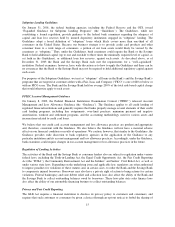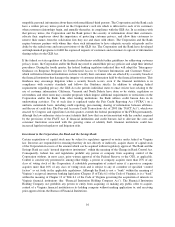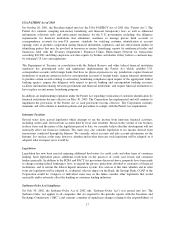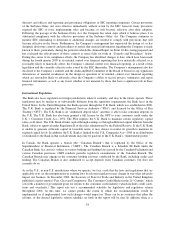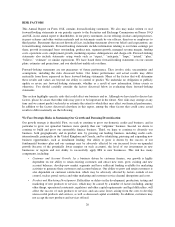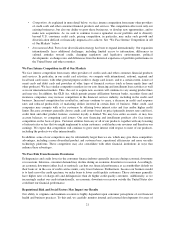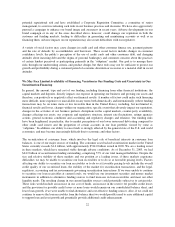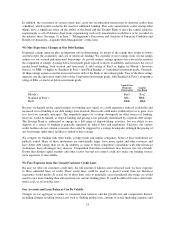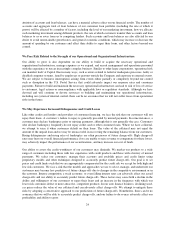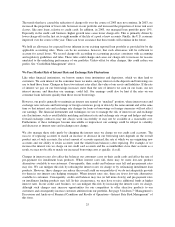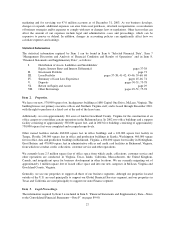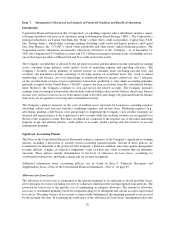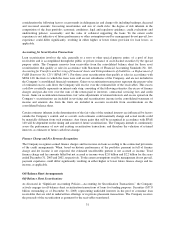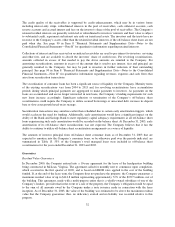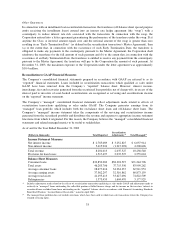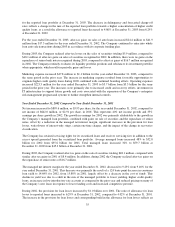Capital One 2003 Annual Report Download - page 43
Download and view the complete annual report
Please find page 43 of the 2003 Capital One annual report below. You can navigate through the pages in the report by either clicking on the pages listed below, or by using the keyword search tool below to find specific information within the annual report.The trends that have caused the reduction of charge-offs over the course of 2003 may not continue. In 2003, we
increased the proportion of lower-risk borrowers in our portfolio and increased the proportion of lower risk asset
classes, like auto loans, relative to credit cards. In addition, in 2003, our managed loan portfolio grew 19%.
Especially in the credit card business, higher growth rates cause lower charge-offs. This is primarily driven by
lower charge-offs in the first six to eight months of the life of a pool of new accounts. Finally, the U.S. economy
improved over the course of the year. There can be no assurance that these trends will continue in the future.
We hold an allowance for expected losses inherent in our existing reported loan portfolio as provided for by the
applicable accounting rules. There can be no assurance, however, that such allowances will be sufficient to
account for actual losses. We record charge-offs according to accounting practices consistent with accounting
and regulatory guidelines and rules. These rules could change and cause our charge-offs to increase for reasons
unrelated to the underlying performance of our portfolio. Unless offset by other changes, this could reduce our
profits. See “Credit Risk Management” above.
We Face Market Risk of Interest Rate and Exchange Rate Fluctuations
Like other financial institutions, we borrow money from institutions and depositors, which we then lend to
customers. We earn interest on the consumer loans we make, and pay interest on the deposits and borrowings we
use to fund those loans. Changes in these two interest rates affect the value of our assets and liabilities. If the rate
of interest we pay on our borrowings increases more than the rate of interest we earn on our loans, our net
interest income, and therefore our earnings, could fall. Our earnings could also be hurt if the rates on our
consumer loans fall more quickly than those on our borrowings.
However, our goal is generally to maintain an interest rate neutral or “matched” position, where interest rates and
exchange rates on loans and borrowings or foreign currencies go up or down by the same amount and at the same
time so that interest rate and exchange rate changes for loans or borrowings or foreign currencies will not affect
our earnings. The financial instruments and techniques we use to manage the risk of interest rate and exchange
rate fluctuations, such as asset/liability matching and interest rate and exchange rate swaps and hedges and some
forward exchange contracts, may not always work successfully or may not be available at a reasonable cost.
Furthermore, if these techniques become unavailable or impractical, our earnings could be subject to volatility
and decreases as interest rates and exchange rates change.
We also manage these risks partly by changing the interest rates we charge on our credit card accounts. The
success of repricing accounts to match an increase or decrease in our borrowing rates depends on the overall
product mix of such accounts, the actual amount of accounts repriced, the rate at which we are originating new
accounts and our ability to retain accounts (and the related loan balances) after repricing. For example, if we
increase the interest rate we charge on our credit card accounts and the accountholders close their accounts as a
result, we may not be able to match our increased borrowing costs as quickly, if at all.
Changes in interest rates also affect the balances our customers carry on their credit cards and affect the rate of
pre-payment for installment loan products. When interest rates fall, there may be more low-rate product
alternatives available to our customers. Consequently, their credit card balances may fall and pre-payment rates
may rise. We can mitigate this risk by reducing the interest rates we charge or by refinancing installment loan
products. However, these changes can reduce the overall yield on our portfolio if we do not adequately provide
for them in our interest rate hedging strategies. When interest rates rise, there are fewer low-rate alternatives
available to customers. Consequently, credit card balances may rise (or fall more slowly) and pre-payment rates
on installment lending products may fall. In this circumstance, we may have to raise additional funds at higher
interest rates. In our credit card business, we can mitigate this risk by increasing the interest rates we charge,
although such changes may increase opportunities for our competitors to offer attractive products to our
customers and consequently increase customer attrition from our portfolio. See page 54 in Item 7 “Management’s
Discussion and Analysis of Financial Condition and Results of Operations—Interest Rate Risk Management” of
this form.
25


